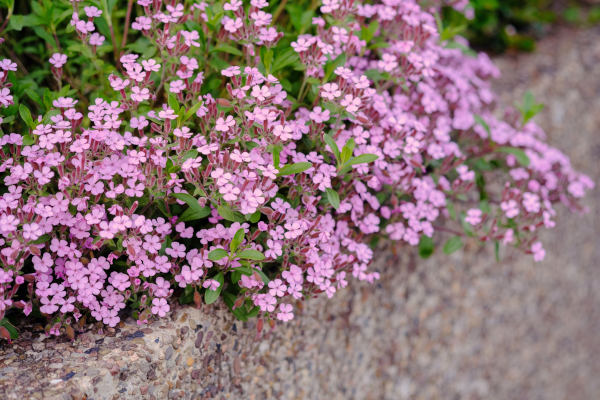How to grow Saponaria
There are around 20 species of Saponaria – some annual, others perennial. They grow wild in mountainous areas of Europe and SW Asia and have been traditionally cultivated for the gentle cleansing properties of their leaves and roots (which produce a bubbly, soapy substance). While fewer gardeners now grow them for this reason, they are still popular for their easy, fast-growing nature and masses of pink summer flowers. The blooms bear a strong resemblance to those of close relatives, lychnis and silene.
Saponaria is also known by the common name of soapwort.
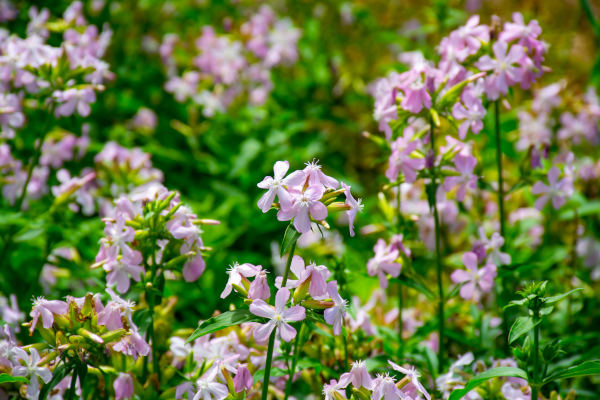
Zantedeschia is a genus of flowering plants from the family Araceae and is native to southern Africa. With a rich history dating back to the Ancient Romans, these deciduous or semi-evergreen perennials have been used as a symbol of celebration. Zantedeschia was Named after Professor Giovanni Zantedeschia, an Italian botanist.
There are two main forms of Zantedeschia: hardy and tender. Hardy forms of the plant can be grown outdoors, enjoy moist soil and full sun or partially shaded conditions - these are known as Arum lilies. Tender forms of Zantedeschia prefer being grown in containers or pots and should be brought inside over the winter - these are known as Calla lilies.
With tuberous flora in all colours from whites, yellows and oranges to deep reds and purples, Zantedeschias are not to be overlooked in any garden, as long as they have sufficient sunlight to grow in.
Ready to learn more about growing Zantedeschia? Read on for all there is to know...

Key Information
Soil pH
Position
Hardiness

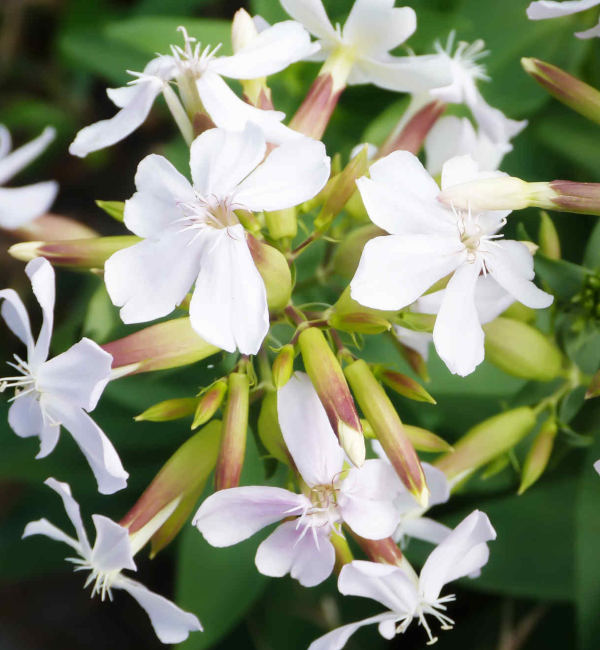
Where & when to plant Saponaria
Position - Full sun. Partial shade will be tolerated, though plants are unlikely to be as lush and floriferous.
Soil - Well-drained, neutral to slightly alkaline. Avoid soil which is too rich or moist, as this often results in weak, floppy growth.
Flowering Period - Summer
Hardiness - Hardy
For best results, plant in autumn or spring. An autumn planting can be done by those gardening in mild conditions (and broadly speaking, this is the southern half of the UK). For those liable to cold winters, it is best to wait until spring (generally the northern half of the UK). Planting can also be carried out in summer, though be prepared to water regularly.
Saponaria range in size from low, mat-forming species such as Saponaria ocymoides and S. caespitosa, to the rounded cushion-forming S. x olivana, and the taller, upright, spreading S. officinalis. Use the low species as ground cover, path or border edging, tumbling over walls, or spreading across a rockery. The taller species is suitable for letting loose in a wildflower meadow or informal wildlife garden, where its vigorous, spreading habit won’t cause problems.
Saponaria resents being restricted in a pot, so we tend not to recommend it for container-growing.
How to plant Saponaria
In the ground
- Clear the chosen area of weeds.
- Dig a planting hole several times larger than the root ball. If your soil is on the heavy side, add a handful or two of horticultural grit.
- Place the plant in the hole, ensuring the top of the root ball sits level with the surface of the soil. Too low and the plant may rot, too high and the roots can dry out.
- Backfill with soil and firm in gently.
- Soak well with water.
- Mulch with well-rotted organic matter.
As stated previously, Saponaria resents being restricted in a pot, so we tend not to recommend it for container-growing.
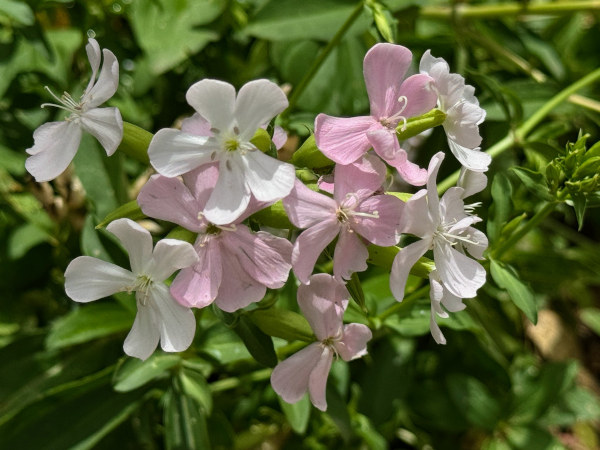
What to plant with Saponaria
We love seeing mat-forming saponaria spilling over the edge of a border – its shock of luminous pink flowers dazzling amongst other sun-loving pinks and purples. Think persicaria, eryngium, phlox, cirsium, and nepeta. Blooming beautiful!
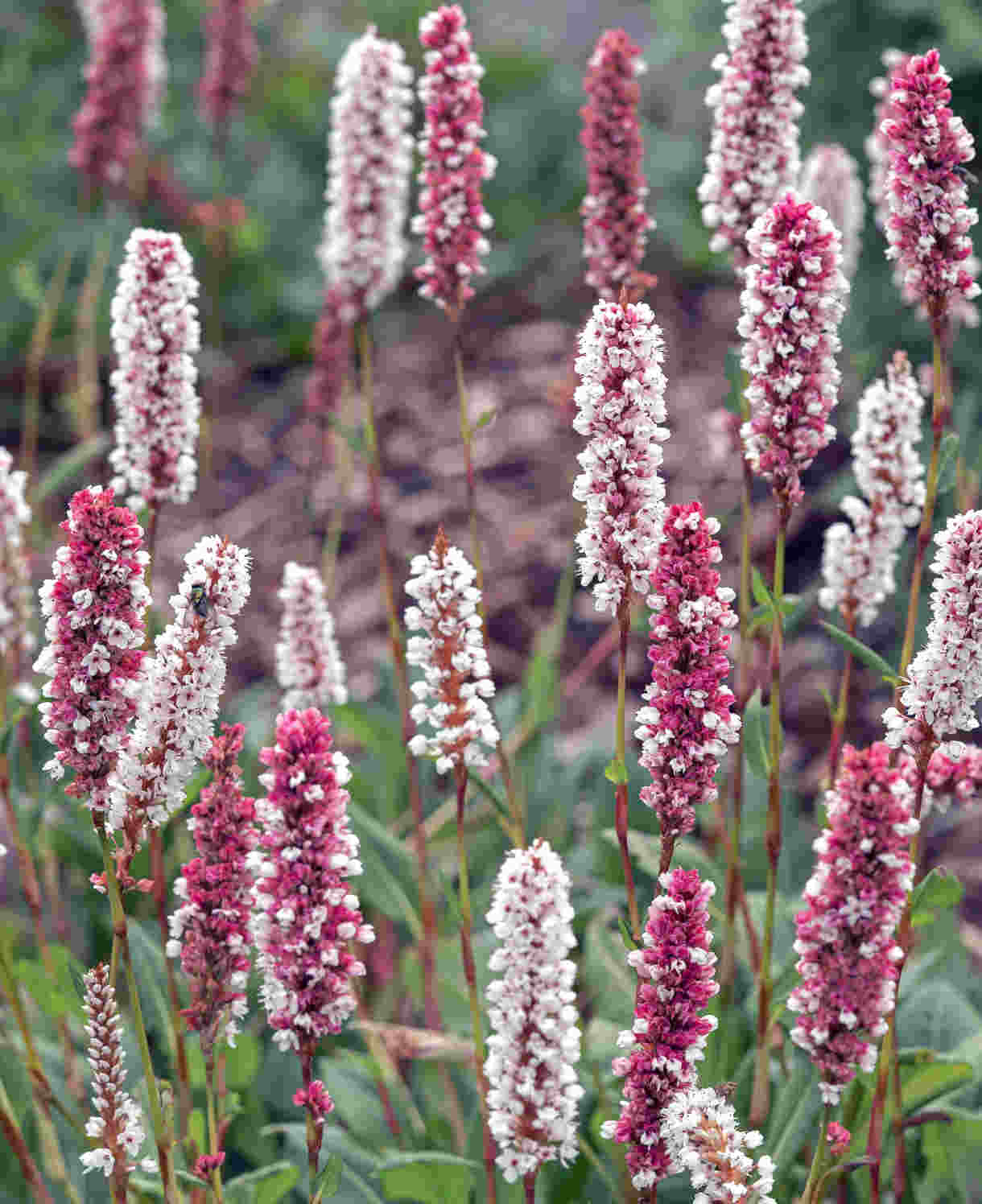
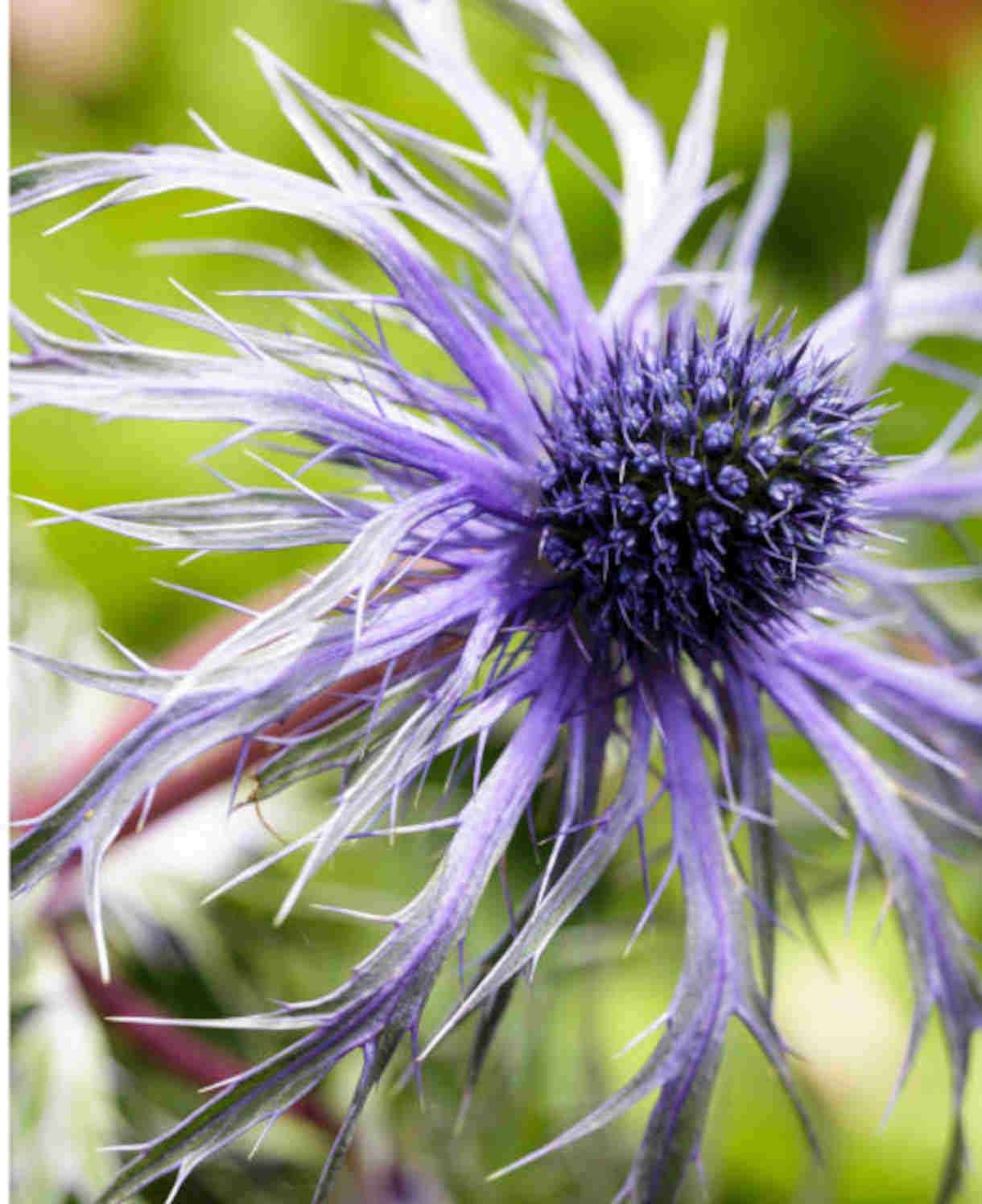
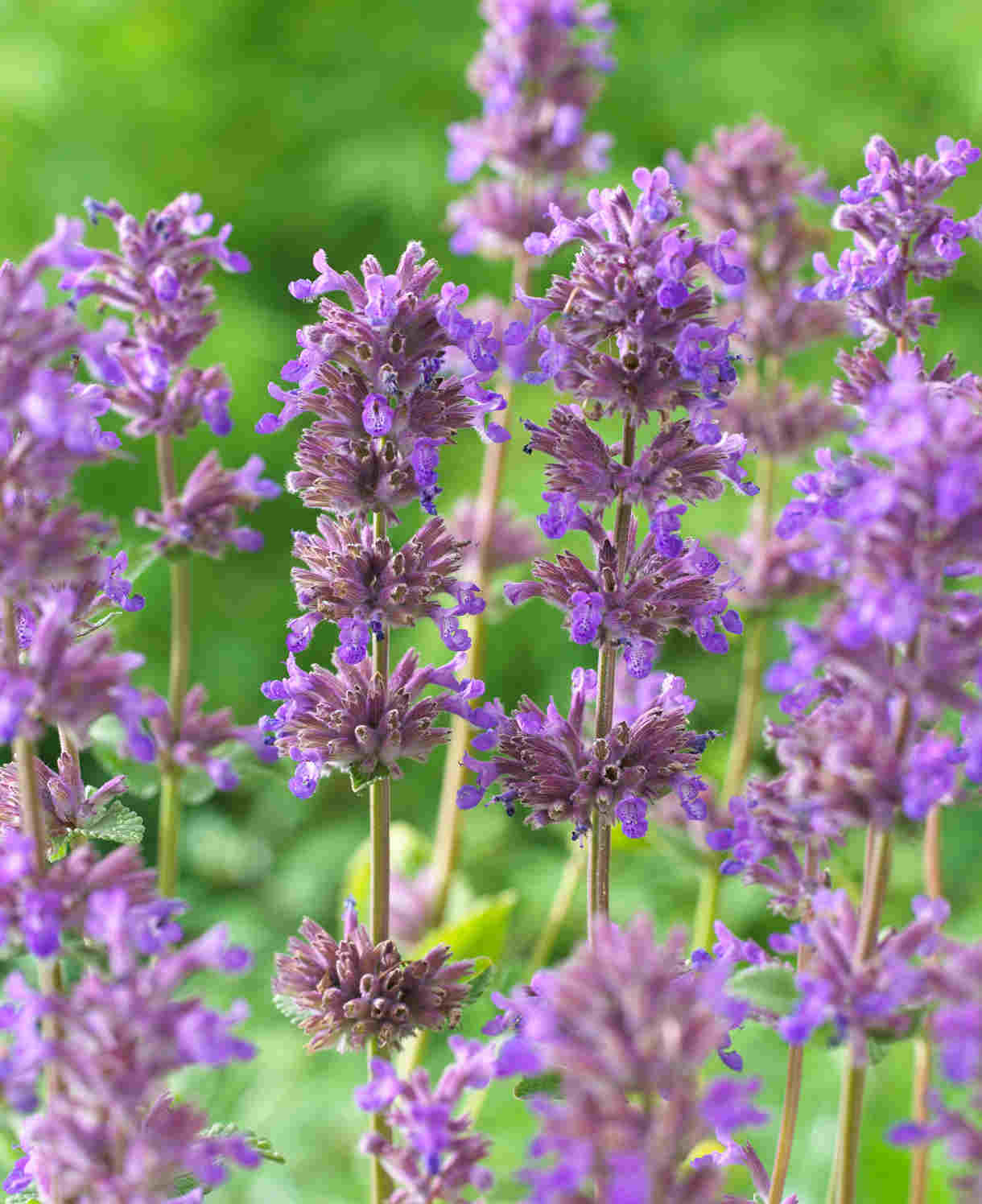
How to care for Saponaria
Pruning and Deadheading
Cut back hard after flowering to maintain a neat, compact habit and prevent invasive spreading.
Watering
Water regularly throughout the first growing season in the ground, and then in very dry spells thereafter. Established saponaria will cope with a few days of drought.
When watering, allow the soil to dry out considerably between large soakings.
Cold Protection
Saponaria is hardy and able to withstand even a cold UK winter without the need for additional protection.
Pests and Diseases
Saponaria tends to be relatively pest and disease free, though you may find slugs and snails develop a taste for its leaves, particularly when they are newly emerging.
Encouraging natural predators into your garden, such as birds, frogs, toads, and hedgehogs, will make a big difference. Torchlight searches after dark (when slugs and snails are at their most active) are also effective, allowing you to collect the offending molluscs in a bucket. Place on the compost heap, or in a part of the garden containing less vulnerable plants.
Like most plants, once saponaria is well established it tends to be better able to tolerate the actions of slugs and snails without the need for intervention.
How to propagate Saponaria
Saponaria needs little encouragement to increase its presence in the garden, being an enthusiastic self-seeder and spreading by creeping, underground rhizomes. If you wish to have plants for elsewhere in the garden or to give away to friends and family, either dig and pot up the seedlings, or divide plants in autumn or spring.
To divide:
- Choose a day when the soil is not frozen or waterlogged.
- Dig the plant out of the ground.
- Shake off any excess soil.
- Separate the plant into sections using either swift, cutting blows with a sharp spade, or two forks inserted back-to-back with tines touching, handles then pushed together to prise the plant apart.
- Discard old, damaged, or surplus pieces, keeping healthy, vigorous material.
- Replant decent-sized pieces where desired, and any smaller bits can be potted up.
- Water well until fully established.
Common Saponaria questions
What can saponaria be used for?
Saponaria has traditionally been used as a soap. Its cleansing properties are so mild and gentle it is still used today to wash antique textiles (such as lace) and treat ultra-sensitive skin. The leaves and roots are roughly chopped and boiled in water to produce a liquid cleanser.
Should I feed or mulch my saponaria?
Go easy on this, as saponaria does best in a moderate to poor soil. An annual mulch of compost, leaf mould, or bark will suffice.
Is saponaria invasive?
All saponaria species have a vigorous approach to life, though the smaller, mat-forming forms are fairly easily controlled. The taller, upright, officinalis poses more risk of becoming invasive, as indeed it has done in some areas of North America.
Is saponaria a good plant for wildlife?
Yes, saponaria is known to benefit a wide range of pollinators with its long-lasting profusion of easily accessible flowers.
